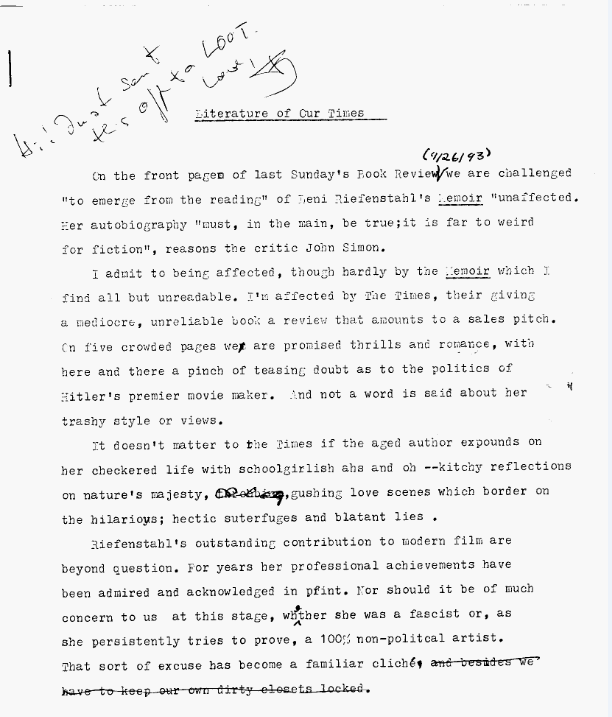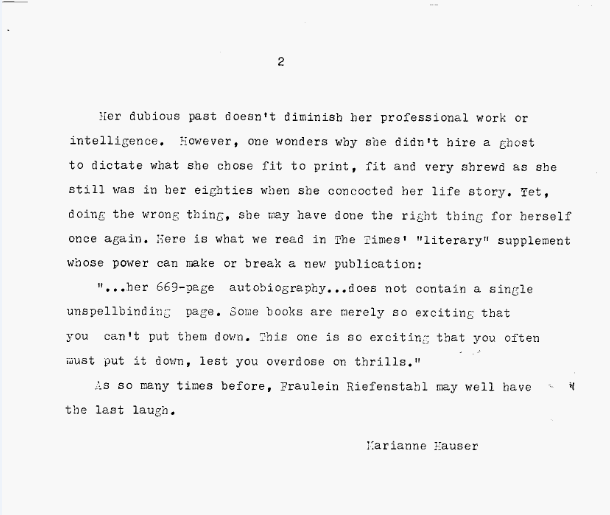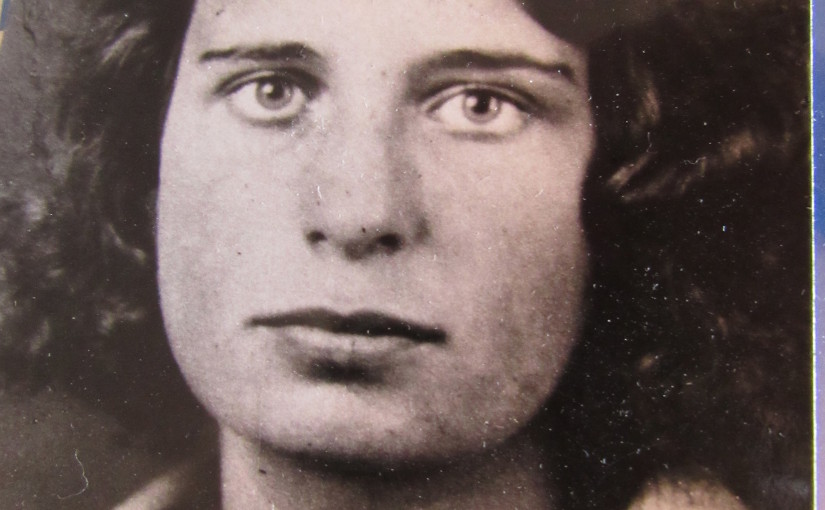Marianne Hauser was born in 1910. Her early life was shaped by the two world wars: her earliest memories are of Strasbourg in the teens, her sister’s death, her father’s working in a German munitions plant, marching off to the bomb shelters singing the song, Allons Enfants, smuggling eggs. In her few autobiographical writings World War 1 is both tragic and a caper, an event that divided the loyalties of her relatives. Her family was German. But they lived as Alsatians, the only identity she embraced her entire life. In the story Allons Enfants her uncle is a member of an underground organization in favor of Alsatian independence. The duality, or tripling of identity informed her work. World War 2 on the other hand, and the Nazis, has no aspect of the caper about it. Hauser loathed the Nazis and was deeply disturbed by her father’s decision to move to Germany in the twenties, and remain until his death in the forties. Her mother died in the forties too. She did not see them after the late thirties, perhaps 1937 or ’38. At some point in those years she skied with her father in Switzerland, and saw her mother in Paris. Her husband, Fred Kirchberger, escaped the Nazis and joined her in America. His brother, Hermann, had married Eva Hauser, Marianne’s younger sister. They are listed as holocaust survivors. I have been able to learn very little about them, even from Michael Kirchberger. The fact is Marianne and Fred were not interested in discussing the past. Yet in the 30’s, in New York, Hauser lectured on the threat of Nazism, addressing church and civic groups. Her beat as a reviewer was the war. The vast majority of her NYT book reviews are of books dealing with Fascist Europe. The same is true for her Saturday Review pieces. I haven’t seen the New York Herald Tribune reviews, but I suspect the same is true there. These were written in the early forties.
Her fiction is full of references to Nazis, fascism, the police state, and often, a character who meets a German and calls him a Nazi. Here is a piece Michael Kirchberger sent me. It is about a review she read in the New York times of Leni Riefenstahl’s autobiography. I don’t know if it was ever published.


Published by

Jon Frankel
This website is dedicated to the life and career of novelist Marianne Hauser (1910-2006). Marianne Hauser wrote 9 novels, and dozens of short stories. Her first novel, Monique, was published in German when she was 22 and living in Paris. Her last novel, Shootout with Father, was published by FC2 in 2002, when she was 91. She moved to New York in 1937 after traveling through Asia and North Africa alone, as a reporter. Only three of her works remain in print today: The Talking Room, her best known work, a brilliant, subversive and hilarious novel about a pregnant 13 year old being raised by warring lesbian parents, published by the Fiction Collective in 1976, Shootout with Father, and The Collected Short Fiction of Marianne Hauser (2004). These books are available from FC2. Her other American books, Dark Dominion (1947), The Choir Invisible (1958), Prince Ishmael (1963), A Lesson in Music (1964), The Late Memoirs of Mr. Ashley (1986), and Me & My Mom (1993), are out of print but easy to find used and in libraries.
This is a collaborative project. Its purpose is to promote her work and make available to interested readers as much information as I can unearth about her. In Hauser's long life she made many professional and personal friends. Her agent was Perry Knowlton and her first book was published by Bennett Cerf six years after she took him to task over Gertrude Stein in her New York Times review of Ida. In 1963 Prince Ishmael was nominated for a Pulitzer Prize, and was a New York Times notable book of the year. From the 1970s through to 2004 her writing was published and reviewed by different incarnations of the Fiction Collective and Sun & Moon Press. She wrote reviews for the American Book Review and appeared in journals like Fiction International, Blatant Artifice, Witness.
If you knew her or are studying her work I welcome contributions, memoirs, interviews, letters, analyses, what have you. Since at least the seventies writers have lamented that she is not better known. Many people have tried to bring her greater recognition: Alice S. Morris, Anais Nin, Marguerite Young, the writers at the Fiction Collective, Larry McCaffery, Sinda Gregory, Douglas Messerli, Margot Mifflin, Ed Cardoni, and Professor Andrea L. Harris, among others. Just about everyone who has written about her has wondered why her work is neglected. Hauser cared little for self-promotion and was impatient with compromise. She was an anti-authoritarian enchantress, intelligent, intuitive, playful, and genuine. She wrote every day on a small manual Olivetti typewriter and tirelessly revised. She was passionate about politics and art. Friends called her Bear. Her final work, Little Buttercup, written for her granddaughter, is subtitled, the happiest bear in the world.
View all posts by Jon Frankel



There is something wrong in your remark of Mariannes Sister Eva. She was married with Hermann Kirchberger, the adoptive son of Paul Kirchberger. Just look for Hermann Kirchberger in the Internet and at HellmannKirchbergerFamilyCollection: https://archives.cjh.org//repositories/5/resources/13909#
You are absolutely right of course and I apologize for not updating this. Thank you so much for leaving this comment. Did you know Hermann and Eva?